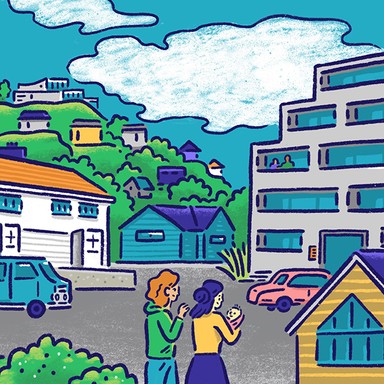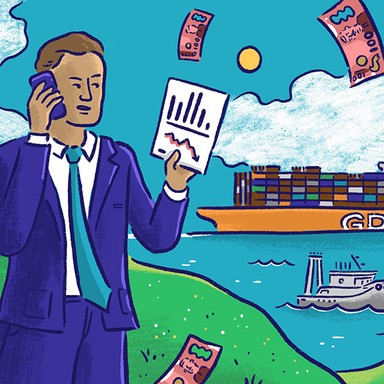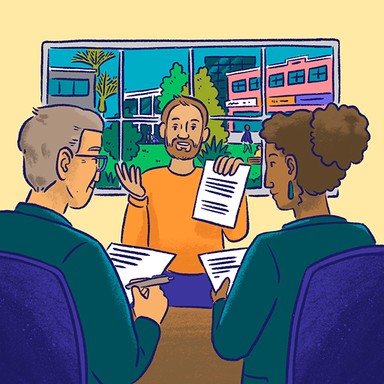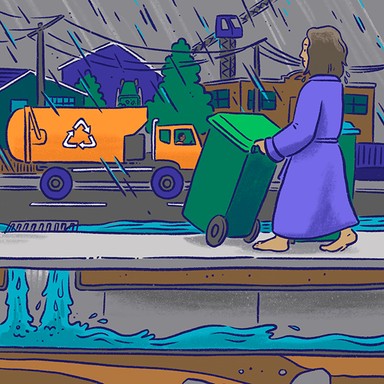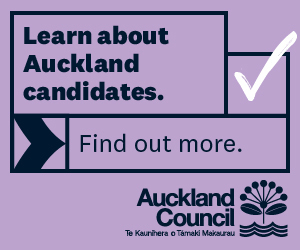
Waitematā Local Board
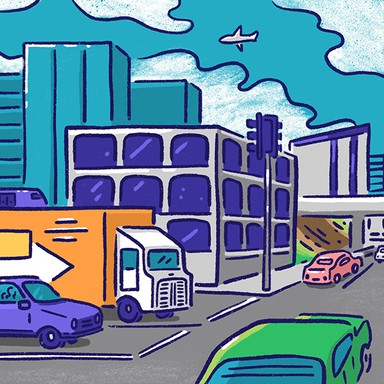
Transport
Helping communities get from A to B is a key responsibility of local government, from making sure the buses run on time to providing car parking and walking and cycling paths. Whether public transport is the responsibility of the regional or local council depends on where you are in the country. Local councils also own 87% of New Zealand’s roads.

Transport
Helping communities get from A to B is a key responsibility of local government, from making sure the buses run on time to providing car parking and walking and cycling paths. Whether public transport is the responsibility of the regional or local council depends on where you are in the country. Local councils also own 87% of New Zealand’s roads.
Bring forward multi-modal (including private cars) integrated transport corridor projects in high-growth areas.
Implementing a sensible parking strategy for arterial roads that provides cycle paths, bus priority, and retains regular kerbside parking.
Work with central government to achieve an additional Waitematā Harbour tunnel or bridge crossing.
Re-enliven the centre of Auckland, taking away useless barriers to car accessibility.
Balance the rights of car owners, pedestrians, bikers, and scooter-users, not allowing one be favoured more than others.
Make walking safer by making scooter use only in the places where a bike can go.
I support the provision of affordable public transport.
I support sensible decision-making around the use of the existing road network for the benefit of all road users.
I would advocate for more a user-friendly traffic management system in the city centre.
Advocate to enable equitable transport choices for all.
Advocate for affordable, accessible, low-emission public transport and urge the rapid expansion of electric bus services.
Advocate for greater government funding of major regional transport projects.
Take a pragmatic, not dogmatic, approach to getting people out of private vehicles and onto public transport.
Advocate to Auckland Transport to enable equitable transport choice for all, with less congestion.
Request more priority investment from Auckland Transport into repairing, upgrading and providing footpaths and for cycle/micro-mobility. users.
Urge the rapid expansion of electric bus services and charging stations for electric cars.
Use the Transport Emission Reduction Plan as a lens when considering all transport projects in our area.
Increase and connect up the safe cycling network and provide sufficient bike parking.
Pedestrianise more areas and discourage traffic through residential streets to make them safer and more pleasant to be in for all ages.
Oppose the current light rail proposal to the airport as it is costly and will be poor service. Look at efficient alternatives.
Stop building any more cycle lanes which are expensive. Cars are not going away any time soon and the motorist is victimised too often.
Free up the city by stopping all unnecessary road works. Allow business to recover.
Advocate for affordable, accessible, low-emission public transport, including light rail, and the expansion of electric bus services.
Advocate maintaining and expanding active transport options, including dedicated walking and cycleways, as part of ongoing urban design planning.
Advocate for increasing pedestrianisation and car-free areas – especially, in the city centre and harbour front – to enhance inner city living.
Elaborate case for extending existing "temporary" half-price bus fares to Dec 31st 2025.
Block Auckland Harbour Bridge cycleway proposal as logistically unfeasible, dangerous, and unnecessarily costly.
Propose to regulate bicycle and e-scooter traffic off the pavements for pedestrian safety.
Advocate to Auckland Transport for equitable transport choice for all, with less congestion and a higher priority for pedestrian projects.
Request more priority funding from Auckland Transport for repairing and upgrading footpaths and for cycle and micromobility users.
Urge the rapid expansion of providing electric bus services and for charging stations for electric cars and bikes.
Request more priority investment from Auckland Transport into repairing, upgrading, and providing footpaths and support Auckland Transport's Vision Zero plan.
Advocate for affordable, accessible, low-emission public transport and urge the rapid expansion of electric bus services.
Advocate for the implementation of Access for Everyone, including safe cycle network and the pedestrianisation of High Street.
Prioritise high-speed reliable public transport corridors to medium-high density rural-fringe satellite towns (especially future), over low.
Prioritise public transport which can reliably service less mobile people on a rainy day, over cycleways. There is room for both of course.
Review funding for the NZ Transport Agency case for a second harbour crossing involving rail. Cyclists can take their bikes on this train or the ferry.
Advocate for the expansion of the electric bus fleet and prioritisation of electric buses only on Queen Street Waihorotiu Valley.
Ensure the implementation of the City Centre Masterplan, in particular, Access for Everyone (A4E).
Advocate for the prioritisation by Auckland Transport for safe alternative transport modes and micro mobility.
Revitalise the city centre by improving motor vehicle accessibility.
Regulate bicycle and e-scooter traffic ensuring that they are not causing a nuisance to foot traffic in the city centre.
Block the proposed harbour bridge cycle lane due to unnecessary cost and inconvenience to the bridge traffic.
Bring forward multi-modal (including private cars) integrated transport corridor projects in high-growth areas.
Implementing a sensible parking strategy for arterial roads that provides cycle paths, bus priority, and retains regular kerbside parking.
Work with central government to achieve an additional Waitematā Harbour tunnel or bridge crossing.
Re-enliven the centre of Auckland, taking away useless barriers to car accessibility.
Balance the rights of car owners, pedestrians, bikers, and scooter-users, not allowing one be favoured more than others.
Make walking safer by making scooter use only in the places where a bike can go.
I support the provision of affordable public transport.
I support sensible decision-making around the use of the existing road network for the benefit of all road users.
I would advocate for more a user-friendly traffic management system in the city centre.
Advocate to enable equitable transport choices for all.
Advocate for affordable, accessible, low-emission public transport and urge the rapid expansion of electric bus services.
Advocate for greater government funding of major regional transport projects.
Take a pragmatic, not dogmatic, approach to getting people out of private vehicles and onto public transport.
Advocate to Auckland Transport to enable equitable transport choice for all, with less congestion.
Request more priority investment from Auckland Transport into repairing, upgrading and providing footpaths and for cycle/micro-mobility. users.
Urge the rapid expansion of electric bus services and charging stations for electric cars.
Use the Transport Emission Reduction Plan as a lens when considering all transport projects in our area.
Increase and connect up the safe cycling network and provide sufficient bike parking.
Pedestrianise more areas and discourage traffic through residential streets to make them safer and more pleasant to be in for all ages.
Oppose the current light rail proposal to the airport as it is costly and will be poor service. Look at efficient alternatives.
Stop building any more cycle lanes which are expensive. Cars are not going away any time soon and the motorist is victimised too often.
Free up the city by stopping all unnecessary road works. Allow business to recover.
Advocate for affordable, accessible, low-emission public transport, including light rail, and the expansion of electric bus services.
Advocate maintaining and expanding active transport options, including dedicated walking and cycleways, as part of ongoing urban design planning.
Advocate for increasing pedestrianisation and car-free areas – especially, in the city centre and harbour front – to enhance inner city living.
Elaborate case for extending existing "temporary" half-price bus fares to Dec 31st 2025.
Block Auckland Harbour Bridge cycleway proposal as logistically unfeasible, dangerous, and unnecessarily costly.
Propose to regulate bicycle and e-scooter traffic off the pavements for pedestrian safety.
Advocate to Auckland Transport for equitable transport choice for all, with less congestion and a higher priority for pedestrian projects.
Request more priority funding from Auckland Transport for repairing and upgrading footpaths and for cycle and micromobility users.
Urge the rapid expansion of providing electric bus services and for charging stations for electric cars and bikes.
Request more priority investment from Auckland Transport into repairing, upgrading, and providing footpaths and support Auckland Transport's Vision Zero plan.
Advocate for affordable, accessible, low-emission public transport and urge the rapid expansion of electric bus services.
Advocate for the implementation of Access for Everyone, including safe cycle network and the pedestrianisation of High Street.
Prioritise high-speed reliable public transport corridors to medium-high density rural-fringe satellite towns (especially future), over low.
Prioritise public transport which can reliably service less mobile people on a rainy day, over cycleways. There is room for both of course.
Review funding for the NZ Transport Agency case for a second harbour crossing involving rail. Cyclists can take their bikes on this train or the ferry.
Advocate for the expansion of the electric bus fleet and prioritisation of electric buses only on Queen Street Waihorotiu Valley.
Ensure the implementation of the City Centre Masterplan, in particular, Access for Everyone (A4E).
Advocate for the prioritisation by Auckland Transport for safe alternative transport modes and micro mobility.
Revitalise the city centre by improving motor vehicle accessibility.
Regulate bicycle and e-scooter traffic ensuring that they are not causing a nuisance to foot traffic in the city centre.
Block the proposed harbour bridge cycle lane due to unnecessary cost and inconvenience to the bridge traffic.
Mayor
Compare the mayoral candidates in your area
Local council
Compare the candidates for your city or district council
Regional council
Compare the candidates for your regional council
Local board
Compare the candidates for your local or community board


